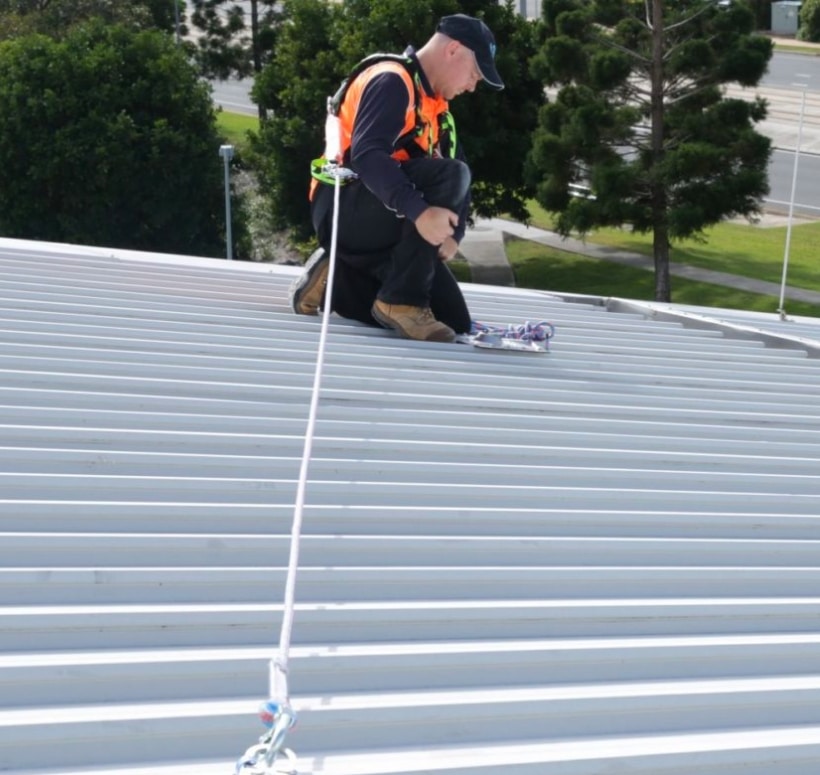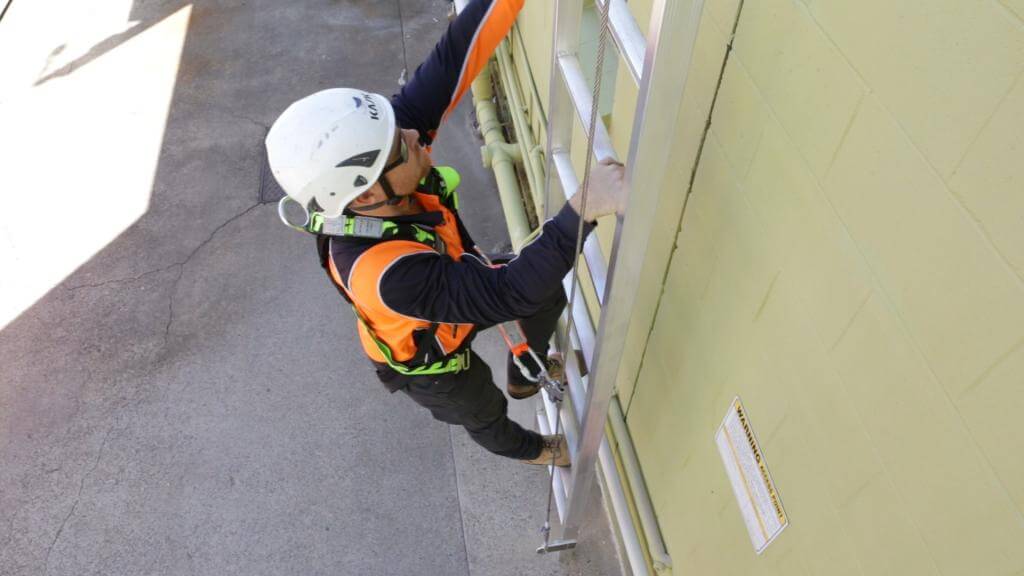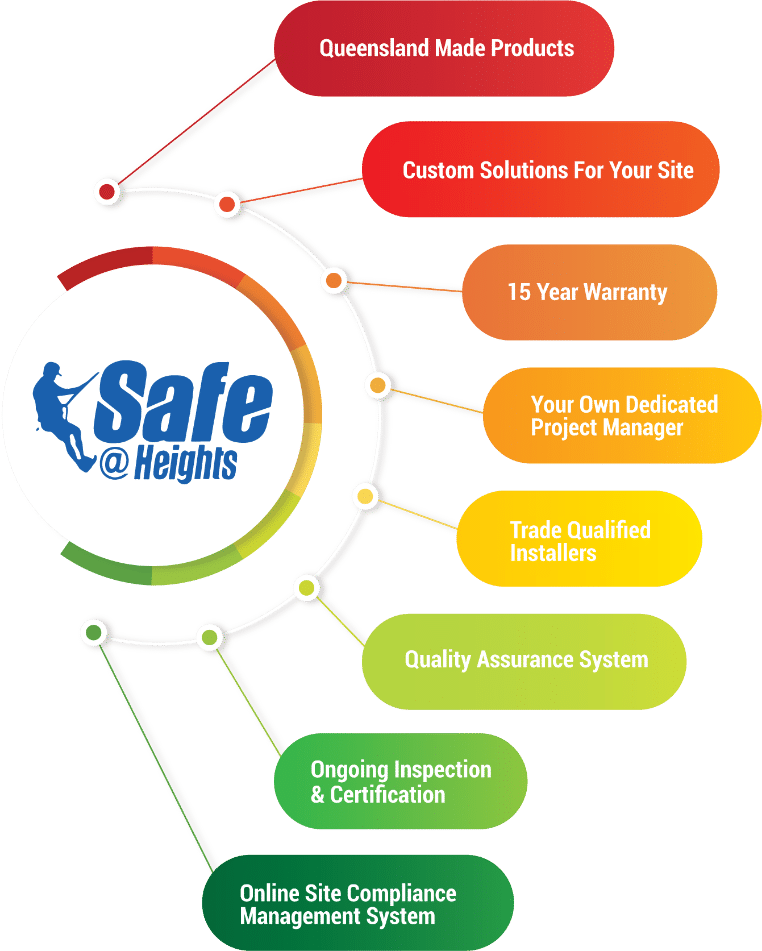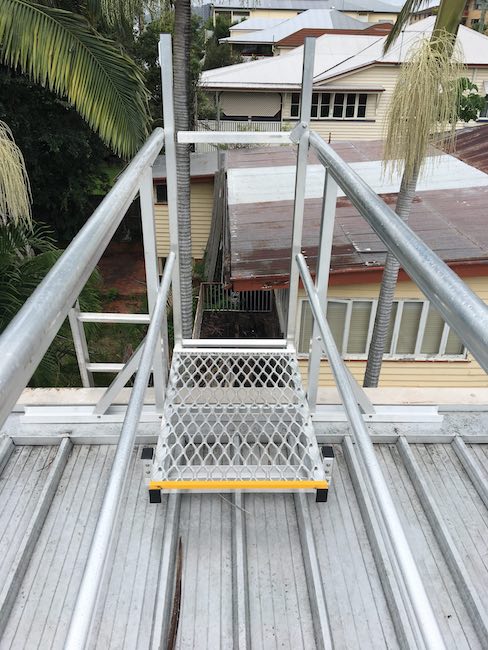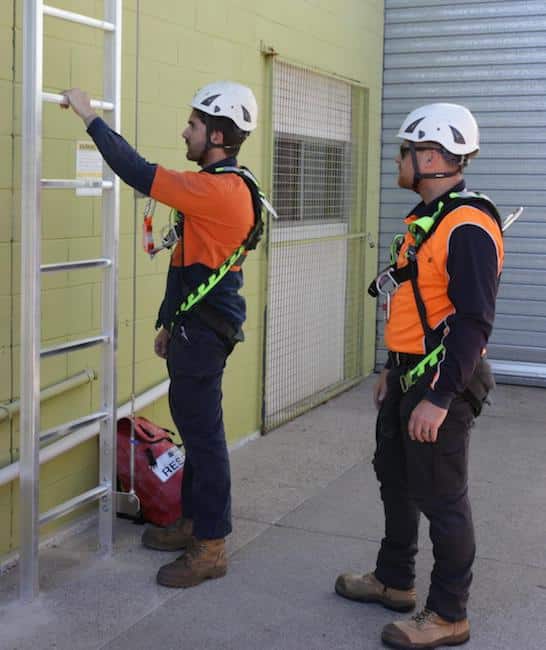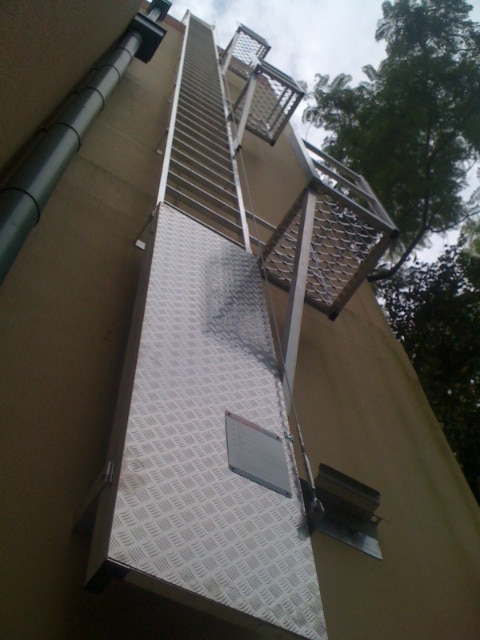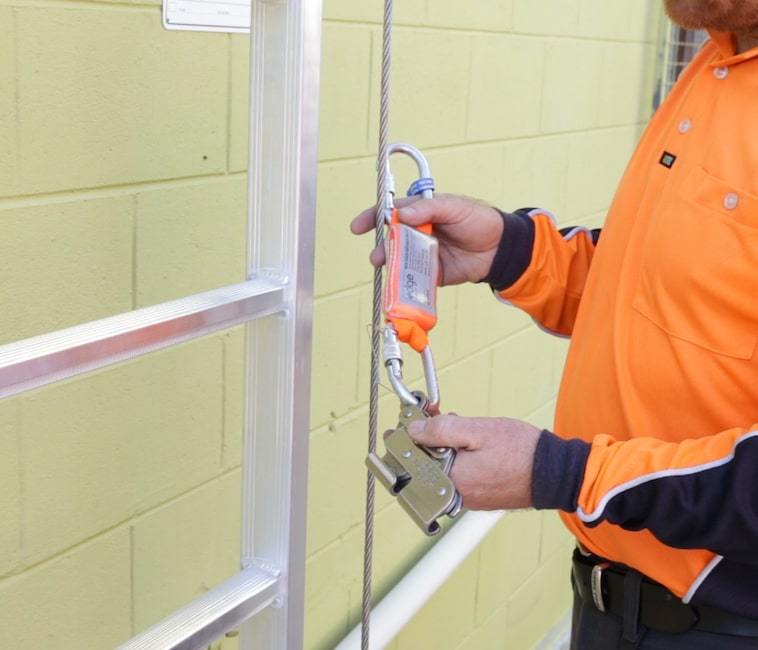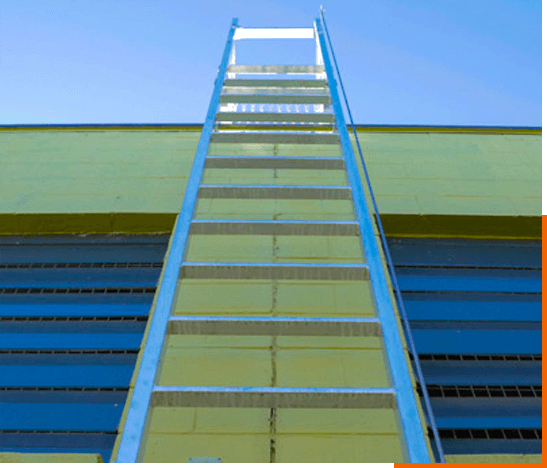Access higher spaces and climb effortlessly with our Vertical Ladders – designed to save space and transform your vertical access strategy.
VERTICAL LADDERS
Safe@Heights are leaders in the design, installation and certification of vertical line ladders in Brisbane and throughout South East Queensland. With almost two decades of experience, we have the right solution for your site.
We also custom fabricate angled ladders, step type and stairs. All our designs comply with AS1657:2018 and are installed by our very own highly trained installers.
We also have available induction and training videos on how to safely use vertical line fall arrest systems including how to conduct a rescue. For more information on our range of systems and training packages please contact us.
Learn More About Vertical Ladders
Safe@Heights is the only height safety company that can offer you a complete video induction and training package with your vertical line ladder installation. Our instructional video takes you step by step through how to safely use the system including how to conduct a rescue. The following instructions come directly from our video training package. For more information on our video training options please contact us.
A vertical ladder is considered a physically demanding ladder to climb and exposes the worker to a high risk of a fall. To control this risk, vertical ladders are fitted with a fall arrest cable system. Attachment is via a cable, shuttle and shock absorber. It is vital that you only use the correct type of shuttle and shock absorber as specified by the manufacturer. The shuttle and shock absorber must have a maximum length of 300mm and be in compliance with AS1891.4. This is to ensure that during a fall the person is not permitted to fall further than 600mm before the system engages. When climbing a vertical static line ladder, it is a legal requirement that the worker has been provided training in how to climb the ladder safely. There must also be two workers present at all times, both trained in vertical rescue. Rescue equipment must be at the work site and ready for immediate deployment.
Vertical Ladders Height Safety Training safe at heights queensland
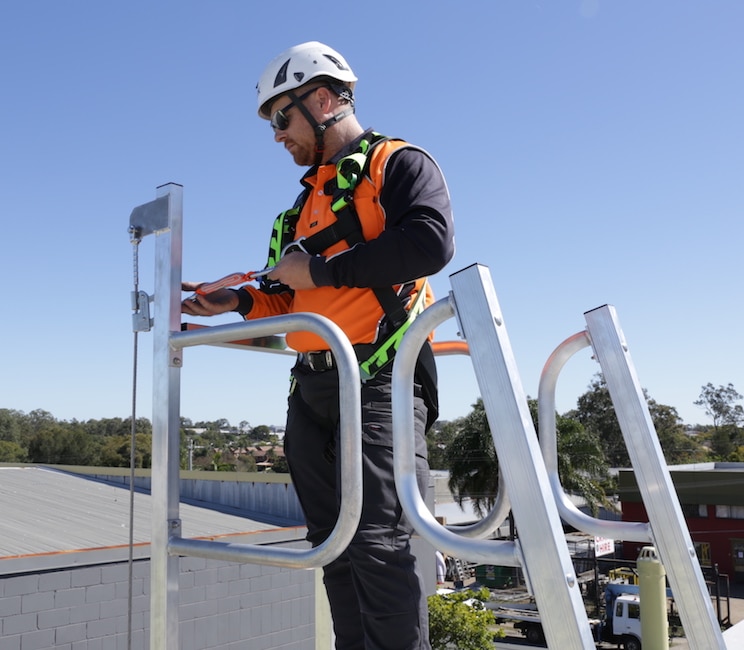
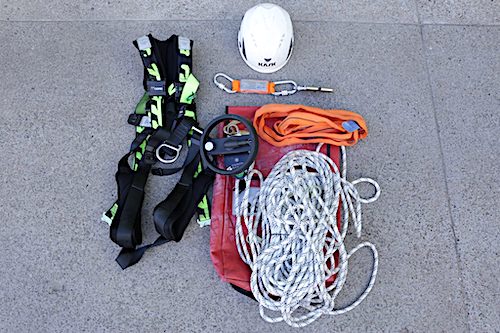
You will need the following equipment to climb this type of ladder safely.
- Full body fall arrest harness
- Climbing helmet
- Shuttle with shock absorber
- Rescue system
- 21kN rated sling
- Twin tail scaffhook lanyard
- Access to first aid assistance
- Ability to contact emergency services
In this demonstration we will be using the Miller Safe Escape rescue device. However you must only use the rescue system that you have been trained in.
Prior to climbing a vertical line ladder, you must inspect the ladder and associated equipment to ensure the following
- The ladder, cable and shuttle assembly have been inspected and certified within the last 12 months by an accredited person
- The ladder is in good condition and free from any damage
- Your harness, rescue system and associated equipment have all been correctly certified and in good condition
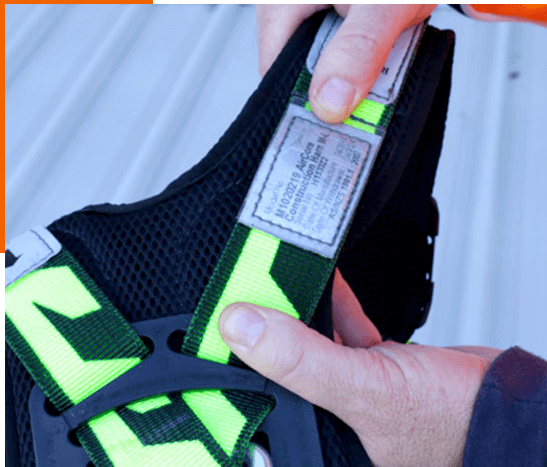
It is vital that you have a practiced rescue plan with an appropriate fit for purpose rescue system. The rescue system must be at the work location and ready for immediate deployment. Ensure that it has been inspected and certified within the last six months. Prior to commencing work you must conduct your own inspection to ensure that the system is in good condition, free from damage and in good working order. Once all the appropriate checks have been completed, you are ready to connect to the cable system and climb the ladder.
It is vital that the shuttle is connected correctly. You must ensure that once connected that the shuttle indicator arrow is pointing up. To attach the shuttle there are 5 steps you must follow. Remove the karabiner and push the shuttle cams to the upward limit. Turn the shuttle onto its side and insert the cable into the horizontal port. Return the shuttle into the vertical position, which will locate the shuttle onto the cable. Lock the shuttle onto the cable by inserting the karabiner into the attachment point. Ensure that the karabiner is engaged and the screwgate is tightened. Test the shuttles function by engaging the lever. It must lock onto the cable immediately. Complete a final check and ensure that the shuttle is facing upward in the correct direction of travel. Attach the shuttle to your front attachment D ring of your full body fall arrest harness. You are now ready to climb the ladder.

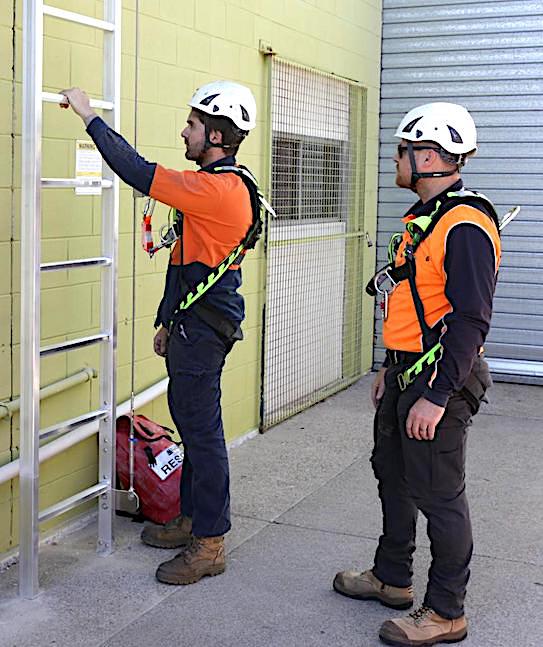
When climbing a vertical ladder you must maintain three points of contact at all times. You must not carry anything in your hands. If you must carry equipment up the ladder do so by putting the items in your pockets, on a tool belt or in a backpack. To protect your head in the event of a fall, it is recommended that you wear an approved climbing helmet as specified in the Managing the Risk of Falls at Workplaces Code of Practice. Once you reach the top of the ladder, transition carefully onto the platform and close the drop down safety bar. This will protect you from falling when you disconnect from the system. Once disconnected from the shuttle, ensure that it has locked onto the cable so that it will remain in place. If a second person is climbing the ladder it is recommended that you remove the shuttle from the cable system.
To descend the ladder, carefully approach the platform edge, ensuring that the ladder safety bar is in place. Attach to the shuttle and ensure you are balanced and have three points of contact. Lift the safety bar, turn and take firm hold of both grab rails. Carefully begin to descend the ladder, maintaining three points of contact. Be aware of your shuttle and ensure that it is descending with you. At times the shuttle may bind to the cable and stop descending. If this occurs, take one or two steps back up the ladder and disengage the shuttle lever. Once the shuttle has released from the cable you may recommence your descent.
The following demonstration of a rescue should not be considered training. A rescue person must have successfully completed a formal rescue course delivered by a rescue professional and have participated in an actual rescue as part of their training. When using a fall arrest system it is a legal requirement to establish emergency and rescue procedures. The rescue plan must have been tested to ensure that it is effective. It is the responsibility of the supervisor to ensure that when using a fall arrest system as a control measure,
- There is an effective rescue plan in place
- The rescue equipment is fit for purpose
- The rescue equipment is at the actual site of the works
- That a trained rescue person is on standby during the works and
- A rescue can be executed in under five minutes
Anyone using a fall arrest system must take into consideration that if they were to fall they will sustain injuries. Even a relatively short fall will exert enormous force through the person’s body. Once the fall has been arrested and the person is suspended in their harness, it is vital that the rescue plan is immediately put into action and the person is safely rescued in under 5 minutes. Every second someone is suspended the risk of them suffering from suspension intolerance increases. Once suspended in an upright position the harness leg straps cause pressure on the leg veins which in turn reduces the amount of blood being returned to the heart and this causes the heart to slow. This may lead to renal failure and eventually death, depending upon the person’s susceptibility to the condition. Other factors such as the injuries they have sustained during the fall, heat and dehydration can increase the risks. After 5 minutes of being suspended the risk of suspension intolerance increases dramatically.
Once a fall has occurred it is vital that you do not panic. If there are other workers close by ask them to contact emergency services. Call to the fallen worker and see if they are conscious. If so, they may be able to reconnect to the ladder and continue their descent. If not, you must immediately commence the rescue. Remember. Only attempt a rescue if you have been properly trained and deemed competent to do so.
As the rescue person, you will already have your harness fitted and your helmet on. Move to the ladder and remove the rescue kit from the bag. Connect the twin tail lanyard to your front D ring. Secure the fall arrest sling and connect the rescue kit to the same side of your harness as the cable, which is the right hand side. Remove the rope from the rescue bag to allow you to complete the rescue. Move to the ladder, connect both hooks and commence your climb. Ensure that you maintain three points of contact at all times. Continue to move the lanyard hooks one at a time to the highest ladder rung you are able to reach safely. It is important that you keep the lanyard hooks at least one rung above your head at all times. This will limit the distance you are able to fall.
Climb until you can attach approximately five rungs above the fallen worker. This is to allow you sufficient distance to connect the rescue kit and suspend yourself at the optimal level to conduct the rescue. If you are not able to connect this distance above the fallen worker, you will need to shorten your sling and attachment points. Connect your hooks and place the sling around two rungs. Connect the rescue kit to the sling and move your attachment point down far enough so that when the lanyard takes your weight you are positioned three rungs above the worker. It is important that where possible you allow the lanyard hooks to take the majority of your body weight. This will allow you to use both hands and eliminates the risk of you falling.
Connect the rescue system to the workers front D ring and begin to winch them up. You will need to raise them until sufficient weight has been removed from their attachment point to allow disconnection from the ladder cable. As you are winching, have the rescue rope threaded around the rope hook of the rescue device. Keep pulling this tight as the rope is drawn through the device.
Once the weight is off their system, lock off the rescue device by placing the rope around the rope hook and through the rear rope brake.
Disconnect the worker from their system. Release the rope from the brake. The worker will immediately begin to descend. You are able to control their descend sped with the rescue rope. Watch as you lower them and ensure you slow their descent as they reach the ground.
Once they are safely on the ground, very carefully descend the ladder using your double hook lanyard and maintaining three points of contact. If the worker is not conscious, roll them into the recovery position, call emergency services and immediately administer first aid.
Thank you for reading our instructional induction training on how to safely use a vertical line ladder fall arrest system. For further information about our ladders or video induction and training packages please contact us at any time.
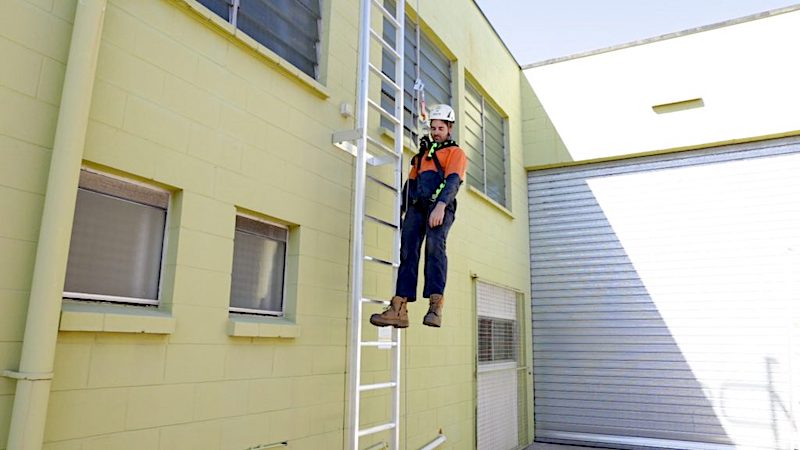
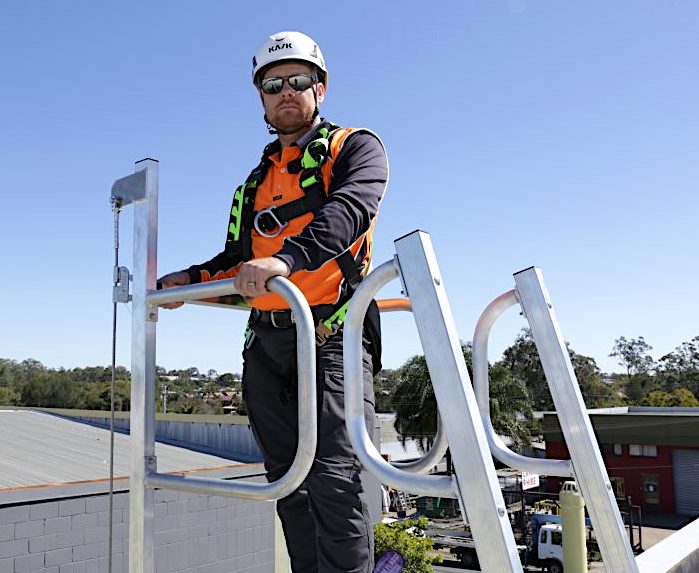
Companies we have proudly worked with











Request a Quote
Get in touch
